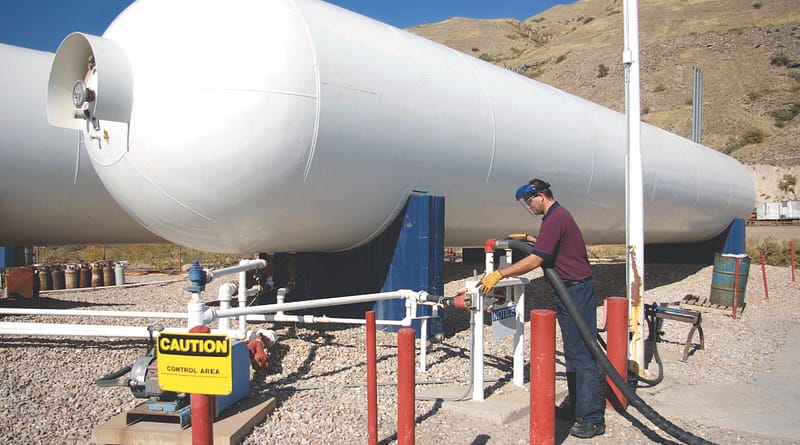Italian Gas Supply
After completing the essential courses, the time had come for my study’s final challenge, the master’s thesis. I had the amazing opportunity to combine this final challenge with an internship at ORTEC Logistics. My enthusiasm reached its top when they offered me to be the first to investigate a growing gas industry requirement.
Every (ORMS) master student knows ORTEC. Even if a student has never attended a lecture of Goos Kant or Marco Schutten, then he must at least have seen ORTECs name underneath soccer statistics or on the Franz Edelman award in 2012. My interest in ORTEC started to grow in my board year, when I discovered the career possibilities of an ORMS graduate. After solving interesting ORTEC cases at the LED and the ORTEC Business Course, I decided to launch my career at ORTEC. ORTECs largest advantages are, in my opinion, the variety of work, the elegant practical applications of ORMS-techniques and their edge on knowledge and software products.
My research project is based on a real life situation at one of ORTECs partners. This partner is responsible for the delivery of gas to many individual households in Italy. About 50% of their customers call whenever they require a delivery. Because of changes in the industry, an increasing amount of these call-in customers need to be at home when their tanks are refilled. Currently, the standard agreement is to deliver the gas to customers within three days but the provision of more specified delivery windows increases customer satisfaction.
However, the customer service department handling the call-in customers has no insight in the planning. Without this insight, specified delivery time agreements will probably result in inefficient logistic constraints. For example, if a half-loaded truck is in the neighborhood of a certain call-in customer on Wednesday, the delivery to this call-in customer on Wednesday will be relatively cheap. If the customer service department fixes the delivery timing for Thursday, the delivery of this call-in customer can be relatively expensive, since a truck might have to make a large detour on that day.
To compute the costs of a delivery, you could consider the costs of adding the order to the current schedule. However, in that case future call-in orders are not taken into consideration. To improve the results, call-in order costs can be computed on the basis of a future schedule forecast. The objective of my project has been to develop, implement and evaluate multiple heuristics, forecasting the logistic costs of a call-in order within the computation time restrictions.
ORTECs experience from earlier applications has been of large added value in developing the heuristics. Although this is the first order timing application in the gas industry, similar projects have been executed in other industries. Brainstorm sessions and conversations with several of ORTECs experts provided me with a good scientific framework for a solution approach. In combination with techniques explained in literature, this led to five solution algorithms. From that moment onwards, the objective of my research became crystal clear: implement and evaluate these five solution algorithms.
The second challenge was the heuristics’ implementation on real life data, software and business processes. To succeed, an extensive data analysis could not be skipped. In cooperation with multiple implementation consultants I managed to create the software code that did the job and provided the cost overviews I wanted.
The final challenge was the evaluation of the forecasted cost overviews. This evaluation is based on two real life datasets. Data from the first database is used as input for the algorithms to forecast the future costs. Since the second database contained information of the upcoming week in the same planning areas, the real order costs could be computed. With the forecasted and realized cost overviews I evaluated the algorithms on the basis of multiple quality measures.
Obtaining the databases was not easy, since the large datasets had to come from Italy. Because of ORTECs healthy cooperation with this partner and the partner’s healthy interest in the solutions of this research, the permission was obtained rather fast. After installing two huge databases from a production environment in Italy to a test environment in The Netherlands, the experiments could be executed to obtain the results.
Two algorithms showed the best results. In the recommended pilot implementation these two algorithms are combined to increase the quality. The algorithm of this recommended combination saves 55% of the costs of inefficient agreements due to detailed timing agreements. This corresponds to savings of thousands of euro’s per week.
Provided with these results, I was invited to come to Italy to present my research and interactively discuss the practical application. During this workshop, I found myself in a meeting room together with about fifteen Italians including the executive board. Needless to say, it has been brilliant to discuss my research with managers from all disciplines and the company’s CEO. After various views and comments, we were convinced that the solution has true possibilities in practice, although some extended research and effort will be necessary. Not the worst possible first business travel conclusion, I suppose.
The results are not only applicable for one company; other partners of ORTEC can implement the solution approach as well. During the project, other companies have indicated their interest in the project’s conclusions.
The interest of companies in my thesis project has been really motivating. However, as we all know, the main goal of a master’s thesis is to develop yourself. Tilburg University and ORTEC certainly did a great job in offering me opportunities for development. I learned to cooperate with colleagues and partners in a business environment, I learned to structure a large research in a compact report, I learned to find and program a solution approach to a complex problem and I learned to manage my own largest project.
Now that the results of my research improve customer satisfaction on paper, my next challenge is to improve customer satisfaction in practice. Currently, I am not facing this challenge as a student, since the theoretical study gained me my master’s diploma, but as an implementation consultant at ORTEC.
Text by: Robbert van Oosten




